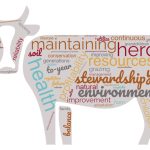
Pasture

How barbed wire transformed ranching in the West
Vet Advice with Dr. Ron Clarke

Cameras make a difference in winter calving
Winter calving can be a challenge, but cameras make it easier

Australian and Brazilian relationship a global win for Canadian cattle breed
Australian breeders are now exporting Speckle Park genetics to new markets

Big cows and big questions
Research on the Record with Reynold Bergen

South Dakota farmer focuses on soil biology
Retired farmer Rick Bieber spoke at the Western Canada Conference on Grazing and Soil Health

Mongolian company turns to Canada for agricultural expertise
Mongolia is behind in technology, but borders on huge markets, motivating those working in agriculture to learn as much as they can

Alltech’s mycotoxin testing rates corn silage as riskier in 2024
News Roundup from the December 2024 issue of Canadian Cattlemen

The big move: Relocating the ranch
The Stewart family undertook a modern cattle drive, moving their operation from B.C. to Saskatchewan

Sustainability in the beef sector is a ‘big picture’ topic
Resilient beef production benefits the environment along with the economic fabric of the country, says the chief livestock scientist for JBS

Nova Scotia beef producers take home The Environmental Stewardship Award
Holdanca Farms emphasizes importance of wildlife, rotational grazing and sustainable farming
The Canadian Beef Industry Conference is the biggest of the year, and one of the biggest awards gets announced here too. The lights in the conference centre are dimmed and the hall buzzes with conversation and the clinking of cutlery, but also with excitement as The Environmental Stewardship Award (TESA) announcement draws closer. The crowd […] Read more


